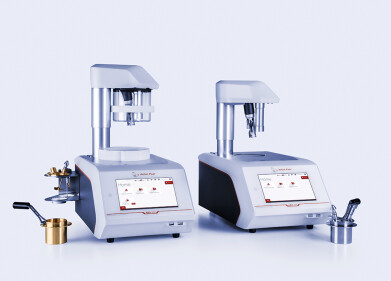Lubricant analysis
What Are the Properties of Lubricants? - Thermal Stability
Mar 13 2022
The ability to resist decomposition in the face of temperature changes is one of the most important properties of lubricating oil. Known as thermal stability, this property is used to predict the physical and chemical changes that may occur after exposure to temperatures that deviate from normal operating conditions. For example, icebreaker ships navigating through Arctic waters and aircraft cruising at high altitudes must be serviced with lubricants capable of withstanding low temperatures.
Why thermal stability matters
Thermal stability can have a dramatic impact on how well a lubricant performs under different operating conditions. At low temperatures, some lubricants may start to congeal which can affect pour point characteristics and flow rate. This can starve machinery of vital lubrication and result in increased resistance, friction and in a worst case scenario, seizure. In hydraulic circulating systems, congealed lubricants can trigger a drop in static pressure. This can create vaporous air bubbles which implode when compressed by pumps and can intensify vibrations, accelerate wear and compromise the efficiency of filters.
High temperatures can also cause issues, including the destruction of hydrodynamic lubrication properties. Exposure to high temperatures can accelerate wear and oxidation, which can release contaminants into a system and increase the risk of water contamination. Additive depletion is also an issue, with high temperatures actively degrading chemical components used to improve lubrication performance. These can include antioxidants, corrosion inhibitors, anti-wear agents, detergents and dispersants.
Testing for thermal stability
Below, we take a closer look at some of the most widely used methods for determining thermal stability.
- ASTM D2070
ASTM D2070 - Standard Test Method for Thermal Stability of Hydraulic Oils is one of the most widely used methods for testing the thermal stability of lubricants. It’s used for hydrocarbon based oils and assesses degradation at temperatures of 135°C.
- ASTM E2550
ASTM E2550 is another common method used to test thermal stability. A thermogravimetric analyser (TGA) is used to determine the “temperature at which the material starts to decompose or react, along with the extent of mass change determined using thermogravimetry.” This is done by exposing the lubricant to a certain temperature for 24 hours, then using data to calculate weight loss on a graph.
- ASTM D6203-17
ASTM D6203-17 - Standard Test Method for Thermal Stability of Way Lubricants is widely used to evaluate hydrocarbon-based products.
- ASTM D5763-11
While not as common as some of the other methods mentioned above, ASTM D5763-11- Standard Test Method for Oxidation and Thermal Stability Characteristics of Gear Oils Using Universal Glassware is useful for calculating the temperature resistance characteristics of some lubricants.
From extending the life of high-value assets to minimising the risk of catastrophic failure, a good lubrication strategy should be a top priority for all mechanical operators. Thermal stability is just one property considered by operators. Find out more about why lubrication matters in our complete guide ‘What Are the Chemical & Physical Properties of Lubricants?’
Digital Edition
PIN 26.1 Feb/Mar 2025
March 2025
Analytical Instrumentation - Elemental Analysis for Quality and Process Control at Refineries, for Lubricants and Wear Metals in Engine Oils - Synthetic Lubricants: New Developments - Scaling...
View all digital editions
Events
Apr 22 2025 Hammamet, Tunisia
Apr 22 2025 Kintex, South Korea
Solar & Energy Storage Summit 2025
Apr 23 2025 Denver, CO, USA
Apr 27 2025 Portland, OR, USA
Apr 29 2025 Mumbai, India
.jpg)


















